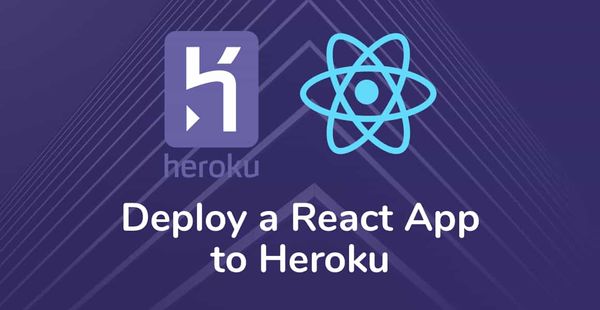A Complete Guide on Bespoke OTT Development
In a digital era dominated by on-demand content consumption, Over-The-Top (OTT) platforms play a major role. While off-the-shelf solutions have their advantages, businesses desiring a unique digital footprint and a customized user experience prefer bespoke OTT development. Crafting a custom OTT platform allows businesses the flexibility to align OTT solutions with their specific business goals, target audiences, and industry demands.
Today in this comprehensive guide, I will share with you the complete details of custom OTT solutions, offering insights and practical steps for businesses looking to create a customized streaming experience. From defining objectives and choosing the right technology stack to designing a seamless user interface and implementing robust security measures, this guide is your roadmap to dive deeper into the landscape of OTT streaming app development.
Whether you're a startup starting your journey in the digital entertainment space or an established brand looking forward to elevating your streaming services, this guide will empower you with the knowledge and tools needed to thrive in the ever-evolving world of custom OTT development.
What is an OTT platform?
Over-the-top (OTT) platforms are digital streaming service providers that deliver video and audio content directly to consumers over the Internet. You can think of them as the new-aged cousin of traditional cable and satellite television providers.
These platforms present a wide array of content, including movies, TV shows, live events, sports, educational programs, and original productions. What makes them unique is their flexibility and control over the viewing experiences. It allows users to access content on-demand, using any internet-connected device, at any time.
What makes customers choose OTT over traditional platforms?
Most people begin their day with content consumption but users these days have strict schedules and miss their favorite content so keeping that in mind OTT came into the picture by solving this issue. Customers are increasingly shifting towards Over-The-Top (OTT) platforms, marking a significant departure from traditional television. Several factors contribute to this phenomenal shift, highlighting changing consumer preferences and the dynamic nature of the digital age.
On-demand flexibility
OTT eliminates the need to follow fixed viewing schedules. With OTT platforms users are released from the constraints of fixed broadcasting schedules. Viewers can watch their favorite content whenever and wherever they desire, aligning seamlessly with their busy lifestyles.
A world of choices
In contradiction to traditional platforms with finite channels, OTT platforms have diverse content libraries that cater to diverse tastes and preferences. From exclusive series and documentaries to a plethora of movies, users enjoy the freedom to explore a vast array of content options.
Anytime, anywhere easy access
OTT platforms grant users the liberty to access content across various devices. Whether you are boarding a flight or sitting in your bedroom using a smartphone, tablet, smart TV, or laptop, you can relish the freedom of switching seamlessly between screens.
Tailored experiences
OTT platforms use refined algorithms to analyze user behavior, providing personalized content recommendations. This high level of personalization enhances the user's overall viewing experience, ensuring that users easily find content that aligns with their interests.
Uninterrupted viewing
Many OTT platforms offer ad-free subscription models, subtracting the interruptions associated with conventional advertising. This acts as a match for users who value an uninterrupted, immersive viewing experience.
Flexible pricing models
OTT platforms often provide various subscription plans, allowing users to choose packages that align with their budget and preferences. This flexibility contrasts with traditional cable or satellite subscriptions that may come with fixed, less adaptable pricing structures.
Community engagement
OTT platforms include interactive features, such as social sharing, user comments, and in-app discussions which enhance the overall viewing experience, fostering a sense of community among users.
Technological advancements
OTT platforms offer high-quality streaming, virtual reality experiences, and interactive content that attract users and hold their attention and excitement about the evolving capabilities of the platform.
Current market stats on OTT platform development
As per the statistics from Mordor Intelligence, the global OTT market is expected to reach USD 1.56 trillion by 2028, expanding at a CAGR of 28.19% (2023-2028).
The projected revenue by Statista for OTT video alone is expected to touch USD 419.90 billion by 2028, highlighting the dominance of video platforms within the OTT space.
Statista also states that the global OTT video market boasts approximately 4.4 billion users in 2023, with projections reaching 54.7% user penetration by 2028.
As per Statista, the average revenue per user (ARPU) in the OTT video market is projected to reach USD 84.12 by 2023.
Kinds of OTT services present in the market
Gaining traction from the Netflix revolution and evolving consumer preferences, the OTT market boasts a rich ecosystem including different service types. Though video streaming is the most highlighted and renowned aspect, let's shift our vision a little and dive deeper into the spectrum of experiences that you can go for
Video OTTs: The ruling champions, these platforms provide on-demand video content spanning movies, TV shows, documentaries, originals, and live events. Renowned names like Netflix, Disney+, and Hulu are a few examples of this dominant category.
Audio OTTs: Not just for music! These platforms cater to audiophiles with music streaming, podcasts, audiobooks, and even live radio broadcasts. Spotify, Apple Music, and Audible are top faces in this realm.
VOIP OTTs: Escaping traditional phone lines! These platforms deliver internet-based voice and video calling, often paired with messaging features. WhatsApp, Skype, and Viber are certain examples of this communication-focused type.
Messaging OTTs: Beyond simple words, these platforms offer rich communication experiences by including multimedia messaging, group chats, voice notes, and even video calls. Facebook Messenger, Telegram, and WeChat are fundamental players in this domain.
But that's not all.
Even within video OTTs, we can see further segregation which includes:
Service-based OTTs: Here major platforms like Netflix focus on providing curated libraries of pre-existing content.
Content and communication OTTs: Global platforms like Zoom or Twitch combine content creation and sharing with interactive communication features.
OTT Devices: Smart TVs and connected devices erase the line between OTT platforms and hardware, offering built-in content access and streaming capabilities.
This diverse landscape authorizes businesses to carve their niche and build engaging experiences for specific audiences. Remember, OTT development isn't just about video streaming; it's about moving into the potential of internet-based content delivery and communication to revolutionize how we connect and consume information.
OTT vs VOD
While both are strong players in streaming and delivering video content on-demand, OTT bypasses traditional cable/satellite providers, while custom VOD platform is an addition to those systems. OTT surpasses VOD, offering greater flexibility and content variety.
OTT AVOD vs SVOD
While both are payment models within OTT. AVOD offers free content backed by ads, while SVOD requires a subscription fee for uninterrupted access. Choosing between them depends on budget, preference for ad-free experiences, and specific content offerings.
Features you need in OTT software and app development
Crafting a compelling OTT platform demands a careful blend of engaging features that serve user expectations and create a seamless streaming journey. Some essentials include:
Multi-language support
Add diversity to your content by using various languages. You can easily add audio content, subtitles, or audio descriptions to your OTT app.
Multiple payment gateways
Give your users different payment options. It must be hassle-free and effortless for them. You can include options like payment via debit cards, credit cards, bank transfers, mobile wallets, etc.
Watchlist access
Provides users the liberty to watch later with a dynamic watchlist. You can put reminders and updates notifying and highlighting the content saved.
Advanced search
Includes advanced search to upgrade the user experience by allowing them to define their choices and recommend personalized results.
Robust content categorization
Place the content separately based on genre, language, or age to enhance user engagement. Make it hassle-free for your users to browse their favorite content.
Track your audience
For data-driven results, use analytics. Analyze your user behavior, and user preferences, user subscription patterns, demographics, etc. to know your audience better.
Watch history
Include watch history logging all user-viewed content and enabling them to resume from where they paused off a movie or TV show, subtracting the pain of manual tracking.
Customized experience
Make it easy for concurrent users to enjoy a personalized experience with their dedicated profiles, preserving separate watch histories, favorites, and watchlists for an ordered experience.
Privacy and security
Make sure you follow a secure approach, keeping user activities and preferences private, throughout the use.
Platform compatibility
Make sure you exercise platform compatibility by adapting to users' preferred devices delivering them an experience that's enjoyable and convenient.
QR code-based registration and login
Ease authentication pain with QR code-based registration and login eliminate the hassle of authentication. Scan and access is the simplest for users to unlock exclusive content and privileges across different devices.
Business models to monetize your OTT service
Choosing the right OTT business model is vital for sustainable revenue generation. The three most prominent models that empower content providers to monetize their OTT platforms effectively are
TVOD
It works on revenue per click, authorizing viewers to rent or purchase individual content pieces. Most preferred for premium titles, new releases, or niche offerings that include a one-time fee. It bestows users with flexibility while offering high revenue potential per title.
AVOD
It targets a massive audience by removing paywalls, and tempting viewers to enjoy content using strategic ad placements. Perfect for platforms that require rapid growth, targeting broad audiences, or showcasing content with mass appeal. It offers complete accessibility and viewership but requires thorough ad management to balance revenue with user experience.
SVOD
It follows loyalty through recurring subscriptions, giving unlimited access to a vast content library for a particular monthly or annual fee. Model for platforms that have extensive catalogs, niche offerings that foster dedicated communities, or those prioritizing predictable revenue streams. It promotes binge-watching and engagement but requires a compelling library to retain subscribers.
Plan for successful OTT app development
Select a niche
Choose your point of interest in the crowded OTT landscape by defining your unique niche. Decide whether you want to spotlight independent films, cater to sports enthusiasts, or cultivate a community of anime lovers. Concentrate on a specific audience with tailored content to stand out.
Develop content inventory
Plan your content! Begin from original productions, secure licensing agreements, or curate user-generated content. Give importance to quality and relevance to your niche to charm viewers and establish your brand identity.
Choose your business model
Select revenue streams that complement your content strategy and audience preferences. Explore subscription-based (SVOD), ad-supported (AVOD), pay-per-view (TVOD), or hybrid models to optimize monetization and cater to diverse users.
Create your website
Design an engaging website that highlights your content, communicates on behalf of your brand, and seamlessly guides users toward app downloads and subscriptions. Considering SEO optimization for organic traffic and visibility can serve better.
Choose the tech-stack
Once ready with the idea, it's time to grind the tools needed to power your OTT experience. Consider video encoding and streaming platforms, content management systems (CMS), payment gateways, and analytics tools. Make sure it offers scalability, security, and compatibility across diverse devices and platforms.
Get your OTT app developed
Collaborate with an experienced development team to bring your vision to life. From crafting an intuitive user interface to implementing secure payment gateways, make sure your OTT app is developed with a focus on user experience, security, and scalability. Regular testing and feedback loops are critical to refining and optimizing the app for a successful launch.
OTT platform development cost
When it comes to the cost factor for OTT development, features like content streaming and user management start at lower costs. While advanced features like live streaming, social integration, multi-device compatibility, and personalized recommendations elevate expenses.
Basic OTT platforms start from USD 25,000 to 60,000. The mid -range platforms with advanced features typically cost around USD 60,000 to 150,000. The custom-built platforms with high-end features and extensive content libraries exceed USD 150,000.
Other factors that can affect the cost include the geographical location of the development team, project timeline, and third-party integrations.
Best Practices include prioritizing essential features, exploring open-source technologies, considering cloud-based solutions, partnering with experienced developers, and conducting thorough research and planning.
Conclusion
As we wrap up this wonderful exploration of the ever-evolving OTT landscape, one thing becomes crystal clear: the future of entertainment is streaming, on-demand, and bursting with vibrant possibilities. Whether you're a music enthusiast, a storyteller, or a communication innovator, the OTT playground welcomes you with wide arms open.
But to make this dream of carving your own niche a reality in this dynamic sphere, you need expertise, vision, and the right OTT app development company that can help you craft a captivating OTT platform. Look no further than Logicwind: a team of digital pioneers who can make your dream project come true.
From navigating the complexities of video encoding to shaping an intuitive user experience, we have the expertise and passion to guide you every step of the way.
Contact us today and will make your entertainment idea a notable platform, one captivating stream at a time!
Are you ready to join the wave?
FAQs
Q. How to build your own OTT?
A. To build your OTT, begin by answering who you will entertain, curate a diverse content library, select a monetization model, design an intuitive UI/UX, select a robust tech stack, and collaborate with experienced developers for seamless integration and testing.
Q. How much does it cost to build an OTT platform?
A. The cost varies based on factors like complexity, features, and technology. A basic OTT platform can start from USD 25,000 for basic features and can go beyond USD 150,000 for advanced platforms.
Q. How can I improve my OTT platform?
A. Enhance your OTT platform by analyzing user data to identify pain points and areas for improvement. Regularly add fresh content and update features to keep users engaged. Most importantly prioritize user experience with intuitive navigation and personalization options.
Q. Which OTT is profitable?
A. Netflix is notably profitable, surpassing the streaming industry with a vast content library, global reach, and various subscription plans. Other profitable OTT platforms include Disney+, Amazon Prime Video, and Hulu.
Q. How to build an OTT platform like Netflix?
A. To match Netflix's success, focus on a diverse content library, personalized recommendations, a user-friendly interface, and a robust tech stack. Execute a subscription-based model, prioritize original content, and invest in advanced streaming technologies for a seamless user experience.




